Kofi Akakpo, Cynthia Deng, and De Qian Huang awarded 2021 KPF Fellowships
Each year, the Kohn Pedersen Fox Foundation sponsors a series of fellowships to support emerging designers and advance international research. Two recent Harvard Graduate School of Design graduates and one current student are recipients of 2021 fellowships. Cynthia Deng (MArch/MUP ’21) and Kofi Akakpo (MArch ’21) were awarded the Paul Katz Fellowship, an internationally recognized award that honors the life and work of former KPF principal Paul Katz, while De Qian Huang (MArch ’22) received the Kohn Pedersen Fox Traveling Fellowship , established to broaden the education of a design student in their last year of school through a summer of travel and exploration.
The Paul Katz Fellowship is awarded to international students studying issues of global urbanism and is open to students enrolled in a masters of architecture program at five East Coast universities at which Katz studied or taught: Harvard, Princeton, Yale, Columbia, and the University of Pennsylvania. KPF focuses each annual iteration of the Paul Katz Fellowship on a different global city. This year’s fellowship is tied to Cape Town; previous cities include Mexico City, Tel Aviv, Sydney, London, and Tokyo. Given the ongoing COVID-19 pandemic, KPF has announced that they will pause any travel requirements, and will distribute $15,000 of the $25,000 travel stipend as a financial award to each of the winners.
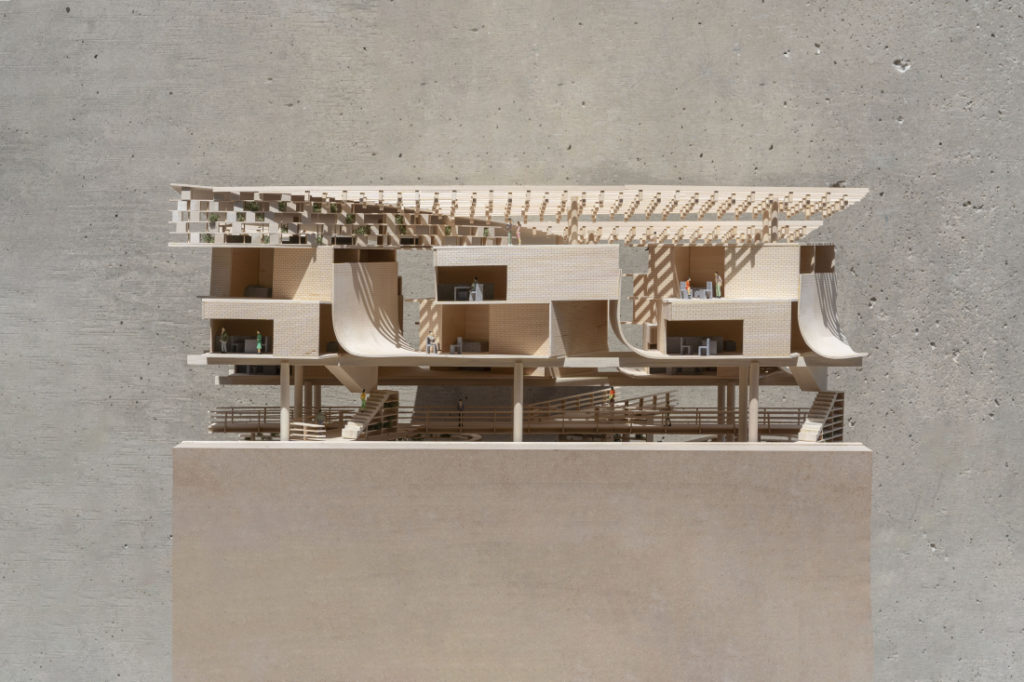
The Traveling Fellowship is given to students from one of the 27 design schools with which KPF has partnered to fund summer research on “far-reaching topics that push the boundaries of critical thinking and architectural design.” KPF has paused travel for the Traveling Fellowship also, and has awarded a scholarship to each winner to fund a “Journey of the Mind.” Huang is one of five winners of the 2021 cycle. Tiange Wang (MArch I ’22) received an Honorable Mention.
For the Paul Katz Fellowship, Deng submitted a research proposal—“Joints, Junctions, Patches, and Sutures: Spatial Repair of Past and Future”—that connects spatial reparations and adaptive reuse in the context of Cape Town’s legacies of apartheid. “The proposal was influenced by some of the research that went into by my joint thesis, ‘Care Agency: a 10-Year Choreography of Architectural Repair,’ completed with Elif Erez (MArch I/MDes HPDM ’22) and advised by Lisa Haber-Thomson and Lily Song,” says Deng. “I also spent time thinking about what Mabel Wilson has said and written about the idea of radical repair and found inspiration from the work of Euneika Rogers-Sipp (Loeb ’16), including her Digging Du Bois project journey and her thinking on reparations ecologies.”
In her proposal Deng asks, “Can the physical repair joints paired with oral histories speak to larger and more transformative repairing forward—such as repairing a Eurocentric architectural discourse in which African ingenuity is largely missing; repairing persistent segregation and lingering trauma bourne of apartheid; repairing ecological relationships ‘where clouds gather’ (the indigenous Khoe translation for the area known as Cape Town)?”
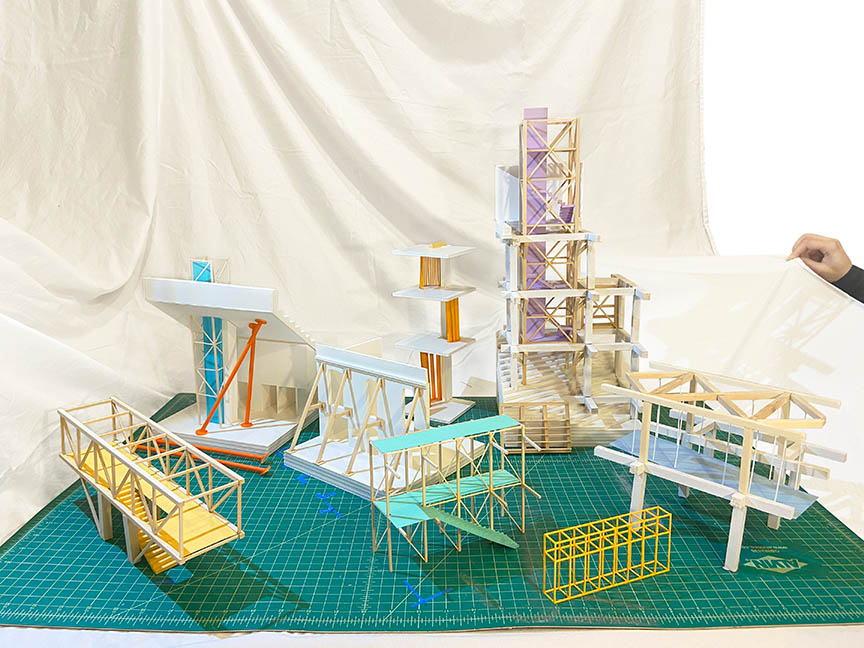
Akakpo’s research proposal, “Reclaiming Beauty in African Architecture,” addresses the need to recover and properly define an African architecture that is independent of Eurocentric standards and colonialism. “Born in Ghana, West Africa, I am intrigued by the way in which people imagine and dream beyond their means,” Akakpo writes in his project brief. “I will focus my documentation and analysis on how public and private spaces are created, how spatial territories are navigated, and how difficult spaces are humanized, personalized and made livable through design.”
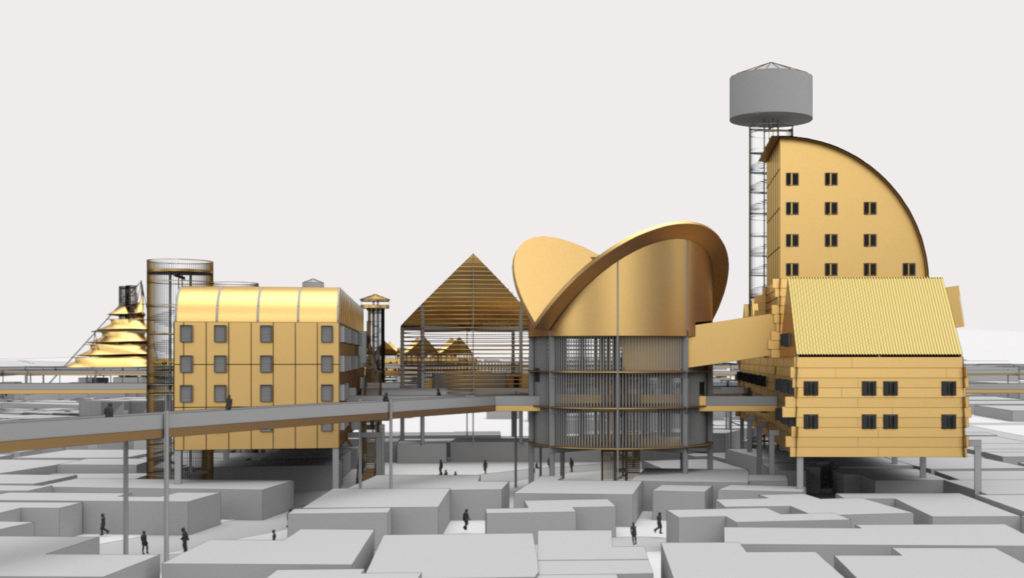
This year’s recipients follow a legacy of GSD students who have been honored with KPF fellowships, including Paul Katz Fellowship winners Yotam Ben Hur (MArch ’20) in 2020, Miriam Alexandroff (MArch ’19) and Peteris Lazovskis (MArch ’20) in 2019, and Sonny Xu (MArch/MLA ’18) in 2018, and KPF Traveling Fellowship winner Eduardo Martínez-Mediero Rubio (MArch ’19) in 2018.
Learn more about the fellowships, lectureships, and education-focused programs the KPF Foundation organizes each year.
John Rahaim on the California Housing Crisis: What are planners to do?
In the past decade, San Francisco has become the poster child for income inequality, housing costs, and homelessness. The regional growth that fueled this national attention has been caused by a perfect storm of two factors: renewed interest in urban living combined with the explosive growth of technology companies. This has led to a worsening condition of economic inequality largely along racial lines. While the same phenomenon is also occurring in other coastal cities, the exorbitant cost of housing in the Bay Area has made the situation more acute. As a planner, urban designer, and former Planning Director for the City of San Francisco from 2008–2020, I was a key player in managing dramatic changes to the city, which saw the most growth in nearly a century during my tenure. It seems clear that in the Bay Area, the price of housing and the associated repercussions are both a cause of, and an almost direct result of, economic inequality and homelessness.In America, housing is a commodity to be bought and sold like a car. The result is that those with means have a place to live, and those without means do not. We must change this paradigm.
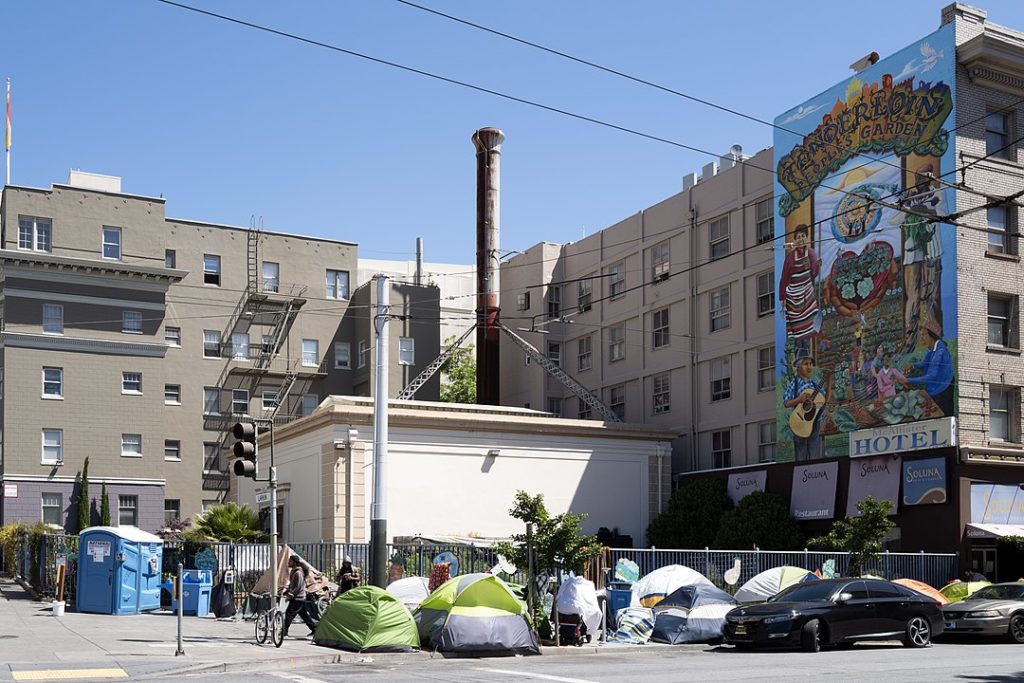
An encampment in San Francisco, 2020. Image by Christopher Michel from San Francisco, USA – Memorial Day 2020 – San Francisco Under Quarantine, CC BY 2.0.
“ResilientHub” wins third place in Solar Decathlon Design Challenge
“ResilientHub,” a project by a team of Harvard Graduate School of Design students, received third place in the Office Building Division of the 2021 U.S. Department of Energy Solar Decathlon Design Challenge. The competition seeks to “challenge students to design and build high-performance, low-carbon buildings that mitigate climate change and improve our quality of life through greater affordability, resilience, and energy efficiency.” The winning projects come from “teams that best blend architectural and engineering excellence with innovation.”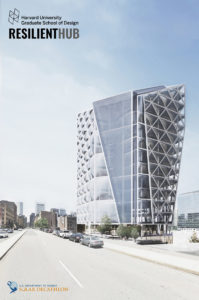 Located in Boston’s Seaport District, the design by Kuan-Ting Chen (MDes EE ’22), Sihui (Iris) Chen (MArch I ’21), Andrew Gibbs (MDes REBE ’21), Kritika Kharbanda (MDes EE ’23), and Lara Tomholt (DDes ’22) is a future-ready building that operates at maximum energy efficiency and comfort levels for its users. The building’s adaptability is responsive to increasing urban density and a changing environment due to climate change. According to the project brief, “The innovative, high-performance design solutions ResilientHub employs are directly applicable to the vast majority of the future global building stock that will be affected by the same environmental changes.”
The project was initially conceived for “Advanced Applications in Sustainable Architecture,” a new elective seminar led by Holly Samuelson, associate professor of architecture. The course seeks to “provide a deeper dive into issues of evidence-based, high-performance, sustainable building design.”
Learn more about “ResilientHub” and view the proposal’s presentation.
Located in Boston’s Seaport District, the design by Kuan-Ting Chen (MDes EE ’22), Sihui (Iris) Chen (MArch I ’21), Andrew Gibbs (MDes REBE ’21), Kritika Kharbanda (MDes EE ’23), and Lara Tomholt (DDes ’22) is a future-ready building that operates at maximum energy efficiency and comfort levels for its users. The building’s adaptability is responsive to increasing urban density and a changing environment due to climate change. According to the project brief, “The innovative, high-performance design solutions ResilientHub employs are directly applicable to the vast majority of the future global building stock that will be affected by the same environmental changes.”
The project was initially conceived for “Advanced Applications in Sustainable Architecture,” a new elective seminar led by Holly Samuelson, associate professor of architecture. The course seeks to “provide a deeper dive into issues of evidence-based, high-performance, sustainable building design.”
Learn more about “ResilientHub” and view the proposal’s presentation.
Rachel Meltzer appointed inaugural Plimpton Associate Professor of Planning and Urban Economics
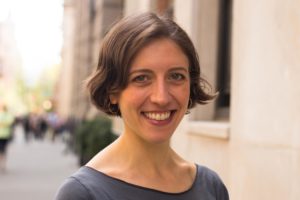 Harvard Graduate School of Design is pleased to announce the appointment of Rachel Meltzer as the inaugural Plimpton Associate Professor of Planning and Urban Economics, a role established in 2019 and made possible by a gift from Samuel Plimpton (MBA ’77, MArch ’80) and his wife, Wendy Shattuck. The position will focus and enable the study of a wide range of urban issues and data, including development, evolving land use patterns and property values, affordability, market and regulatory interactions, open space, consumer behaviors and outcomes, and climate change, and will help inform the decisions of future architects and planners.
Meltzer’s appointment is effective July 1, 2021. The Plimpton Associate Professorship of Planning and Urban Economics resides within the GSD’s Department of Urban Planning and Design.
As the Plimpton Associate Professor of Planning and Urban Economics, Meltzer will teach courses in the core areas of urban economics and quantitative methods, as well as more broadly in housing, climate change, private governance structures, and real estate. She will also be a resource for PhD and Doctor of Design (DDes) candidates working to understand how quantitative approaches can be employed as methods for their dissertations.
“Using the tools of urban economics research to evaluate and measure the societal impacts of development should inform design and planning decisions,” Plimpton observed in 2019 upon the professorship’s establishment. “As the world’s top design school, Harvard and the GSD are the best places for exploring these issues and advancing both urban economics and excellence in design.”
Currently Associate Professor of Urban Policy and Chair of the Public and Urban Policy Master of Science (MS) degree at The New School’s Milano School of Policy, Management, and Environment, Meltzer’s research is broadly concerned with urban economies and how market and policy forces can shape disparate outcomes across neighborhoods. She focuses on issues related to housing, land use, economic development and local public finance. Current projects look at how market-based, natural disaster and policy “shocks” impact retail and commercial activity in urban neighborhoods. These “shocks” range from gentrification to the introduction of broadband to Superstorm Sandy. Meltzer is also interested in the private provision of public goods, and she has explored a number of questions related to Business Improvement Districts (BIDs) and Homeowners Associations (HOAs).
Meltzer is also a Research Affiliate at the Furman Center for Real Estate and Urban Policy at New York University. She teaches in the core policy analysis curriculum at Milano and is the author of the textbook Policy Analysis as Problem Solving (Routledge, 2018), with Milano colleague, Alex Schwartz. She also teaches classes on quantitative methods, urban economic development, and public finance. Prior to her academic career, Meltzer worked as a mortgage officer and project manager for the New York City Department of Housing Preservation and Development, where she managed the financing and rehabilitation of affordable housing. She has also conducted research on inclusionary zoning, an alternative to traditional methods of providing affordable housing, including its impact on local housing markets and the political economy behind the adoption of such policies. Her work has been supported by grants from the National Science Foundation, Social Science Research Council, the Lincoln Institute of Land Policy, the U.S. Department of Housing and Urban Development and the Robert Wood Johnson Foundation.
Meltzer earned her doctorate in Public Policy and MPA from the Robert F. Wagner Graduate School of Public Service at New York University and her BA in psychology and mathematics from Dartmouth College.
For Plimpton, Partner Emeritus and Senior Advisor at the Baupost Group, L.L.C, the gift supporting the Plimpton Associate Professorship is the latest chapter in a long partnership with Harvard GSD. In December 2015, Plimpton and Professor William Poorvu (MBA ’58) established the Plimpton-Poorvu Design Prize, which honors and recognizes students whose work produced at Harvard GSD exemplifies both feasibility and excellence in design. Plimpton received his bachelor’s degree from Stanford University and worked as an independent advisor, developer, and investor in real estate ventures. He held a research appointment in real estate at Harvard Business School from 1978 to 1980, and was an early supporter and a founding member of the Harvard Real Estate Academic Initiative, a cross-faculty initiative, from 2002 to 2015.
Harvard Graduate School of Design is pleased to announce the appointment of Rachel Meltzer as the inaugural Plimpton Associate Professor of Planning and Urban Economics, a role established in 2019 and made possible by a gift from Samuel Plimpton (MBA ’77, MArch ’80) and his wife, Wendy Shattuck. The position will focus and enable the study of a wide range of urban issues and data, including development, evolving land use patterns and property values, affordability, market and regulatory interactions, open space, consumer behaviors and outcomes, and climate change, and will help inform the decisions of future architects and planners.
Meltzer’s appointment is effective July 1, 2021. The Plimpton Associate Professorship of Planning and Urban Economics resides within the GSD’s Department of Urban Planning and Design.
As the Plimpton Associate Professor of Planning and Urban Economics, Meltzer will teach courses in the core areas of urban economics and quantitative methods, as well as more broadly in housing, climate change, private governance structures, and real estate. She will also be a resource for PhD and Doctor of Design (DDes) candidates working to understand how quantitative approaches can be employed as methods for their dissertations.
“Using the tools of urban economics research to evaluate and measure the societal impacts of development should inform design and planning decisions,” Plimpton observed in 2019 upon the professorship’s establishment. “As the world’s top design school, Harvard and the GSD are the best places for exploring these issues and advancing both urban economics and excellence in design.”
Currently Associate Professor of Urban Policy and Chair of the Public and Urban Policy Master of Science (MS) degree at The New School’s Milano School of Policy, Management, and Environment, Meltzer’s research is broadly concerned with urban economies and how market and policy forces can shape disparate outcomes across neighborhoods. She focuses on issues related to housing, land use, economic development and local public finance. Current projects look at how market-based, natural disaster and policy “shocks” impact retail and commercial activity in urban neighborhoods. These “shocks” range from gentrification to the introduction of broadband to Superstorm Sandy. Meltzer is also interested in the private provision of public goods, and she has explored a number of questions related to Business Improvement Districts (BIDs) and Homeowners Associations (HOAs).
Meltzer is also a Research Affiliate at the Furman Center for Real Estate and Urban Policy at New York University. She teaches in the core policy analysis curriculum at Milano and is the author of the textbook Policy Analysis as Problem Solving (Routledge, 2018), with Milano colleague, Alex Schwartz. She also teaches classes on quantitative methods, urban economic development, and public finance. Prior to her academic career, Meltzer worked as a mortgage officer and project manager for the New York City Department of Housing Preservation and Development, where she managed the financing and rehabilitation of affordable housing. She has also conducted research on inclusionary zoning, an alternative to traditional methods of providing affordable housing, including its impact on local housing markets and the political economy behind the adoption of such policies. Her work has been supported by grants from the National Science Foundation, Social Science Research Council, the Lincoln Institute of Land Policy, the U.S. Department of Housing and Urban Development and the Robert Wood Johnson Foundation.
Meltzer earned her doctorate in Public Policy and MPA from the Robert F. Wagner Graduate School of Public Service at New York University and her BA in psychology and mathematics from Dartmouth College.
For Plimpton, Partner Emeritus and Senior Advisor at the Baupost Group, L.L.C, the gift supporting the Plimpton Associate Professorship is the latest chapter in a long partnership with Harvard GSD. In December 2015, Plimpton and Professor William Poorvu (MBA ’58) established the Plimpton-Poorvu Design Prize, which honors and recognizes students whose work produced at Harvard GSD exemplifies both feasibility and excellence in design. Plimpton received his bachelor’s degree from Stanford University and worked as an independent advisor, developer, and investor in real estate ventures. He held a research appointment in real estate at Harvard Business School from 1978 to 1980, and was an early supporter and a founding member of the Harvard Real Estate Academic Initiative, a cross-faculty initiative, from 2002 to 2015. Faculty, alumni awarded 2021 Graham Foundation grants
Members of the Harvard Graduate School of Design community are among recipients of 71 new project grants exploring ideas that expand contemporary understanding of architecture from the Graham Foundation for Advanced Studies in the Fine Arts. In its second major grant announcement of the year, the Graham Foundation awarded funds in support of projects that “engage original ideas in architecture.”The GSD awardees and their projects include:
Gareth Doherty (DDes ’10), associate professor of landscape architecture and director of the Master in Landscape Architecture Program, for the publication Landscape Fieldwork, demonstrating how people-centered fieldwork inspires landscape architectural innovations. Elisa Silva (MArch ’02), for the program titled Nothing Out of the Ordinary: a space for art, celebration, acknowledgement and sancocho in the barrio La Palomera. In partnership with Enlace Foundation, Silva will engage the community to collaborate on renovating an abandoned structure, using art, culture, and events to guide the transformation. Pablo Escudero (MDes ’18) and Pierre Bélanger (MLA ’00) for The Quino Treaty: Renewing Territorial Relations with the Cinchona Plant at the Center of the World by Decolonizing Quinine and the Global Discourse on Conservation.The book charts the 497-year global history of the cinchona plant from South America, whose bark offers a key contribution to contemporary civilization as it contains the only known cure for malaria: quinine. Peter H. Christensen (MDes ’09/PhD ’14) for Materialized: German Steel in Global Ecology. This new study provides a touchstone in a material-centered approach to the history of architecture, linking architectural history and critical ecological studies. Pedro Gadanho (Loeb Fellow ’20) for Climax Change! Architecture’s Paradigm Shift After the Ecological Crisis. The publication offers an overview of how the current environmental emergency will affect the practice of architecture, both in terms of its day-to-day design responses, and in opportunities to innovate and transform the discipline’s current aesthetic, ethical, and professional drives. Kersten Geers, design critic in architecture and co-holder of the Kenzo Tange chair with David Van Severen, in collaboration with Jelena Pancevac, Stefano Graziani, and Joris Kritis for the publication The Urban Fact: A Reference Book on Aldo Rossi, which examines Aldo Rossi’s formulation of a theory of the city. Mindy Seu (MDes ’19) for Cyberfeminism Catalog, a sourcebook of radical techno-critical activism from 1990 to 2020. The catalog gathers hackers, scholars, artists, and activists who reimagine the history of the internet and guide its future. Meredith J. Gaglio (MDes ’10) for Life Arks: Science, Spirituality, and Survival in the Work of the New Alchemy Institute, a research project that considers the ways in which members of the NAI integrated scientific innovation, mysticism, and left-libertarian values into their sustainable bioshelter designs.. Sara Jacobs (MLA ’12) for Landscapes of Racial Formation: Warren Manning in Atlanta, Georgia and Birmingham, Alabama. The research project examines how landscape architect Warren Manning’s white supremacist atlas, “A National Plan,” reified racial formation in Birmingham and Atlanta through city plans implemented by Manning for those cities in 1919 and 1922, respectively. It illuminates how racialized spatial logics are enacted through the making of urban space. Wanda Katja Liebermann (DDes ’13) for the research project Architecture’s Problem with Disability, which critically analyzes the complex relationship between architecture and disability rights in the United States. Cutting across pedagogy, policy, and practice, it seeks to understand the discipline’s narrow response to disabled access, and to explore creative alternatives. The Graham Foundation will announce grants to organizations, as well as winners of the 2021 Carter Manny Award, later this year.Tar Creek Remade: Taking on 120 years of environmental injustice at an Oklahoma Superfund site
Envision a broad expanse of barren gray mounds riven with erosion channels. Pools of viridian, ochre, and bright russet water fill low areas between the piles. Some of these drain into a meandering multicolored creek that makes its way through rank grass and shrubs. A hot breeze lifts gritty dust from the mounds and swirls it across empty roadways. Its dull dry odor mixes with the sharp acidic tang of the creek. A trickle of water and the whisper of rushing air fill the quiet. Residential streets among the huge piles slowly narrow under encroaching weeds, and cracked concrete slabs hold back overgrown lawns. Only memories of the houses remain along 5th, 6th, and 7th, along Cherokee, Oneida, and Ottawa, and along Treece, Picher, and Main Streets. At Memorial Park a black gorilla on a red pedestal announces a 1984 football victory—Oklahoma division 1A. A block away, rising higher than the gray gravel piles called “chat,” a water tower announces: “PICHER Gorillas since 1918.” From an airplane or satellite, Picher, Oklahoma, appears as an anomaly in the endless green grid of agricultural land at the center of the United States. Huge irregular gray blots and dark pools interrupt the geometric precision of roads, and the colorful smear of Tar Creek runs diagonally through the town. Abandoned a decade ago—like its neighbors Cardin and Douthat, Oklahoma, and Treece, Kansas—Picher reveals a legacy of environmental indifference and staggering injustice.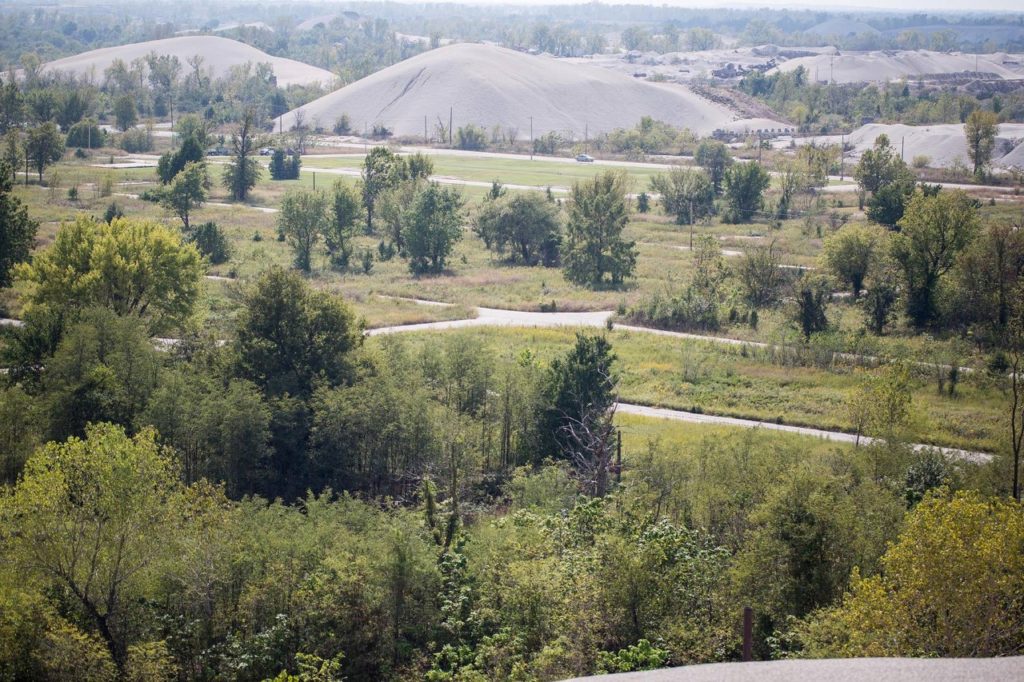
LEAD Agency Inc, Miami, OK and Ed Keahley
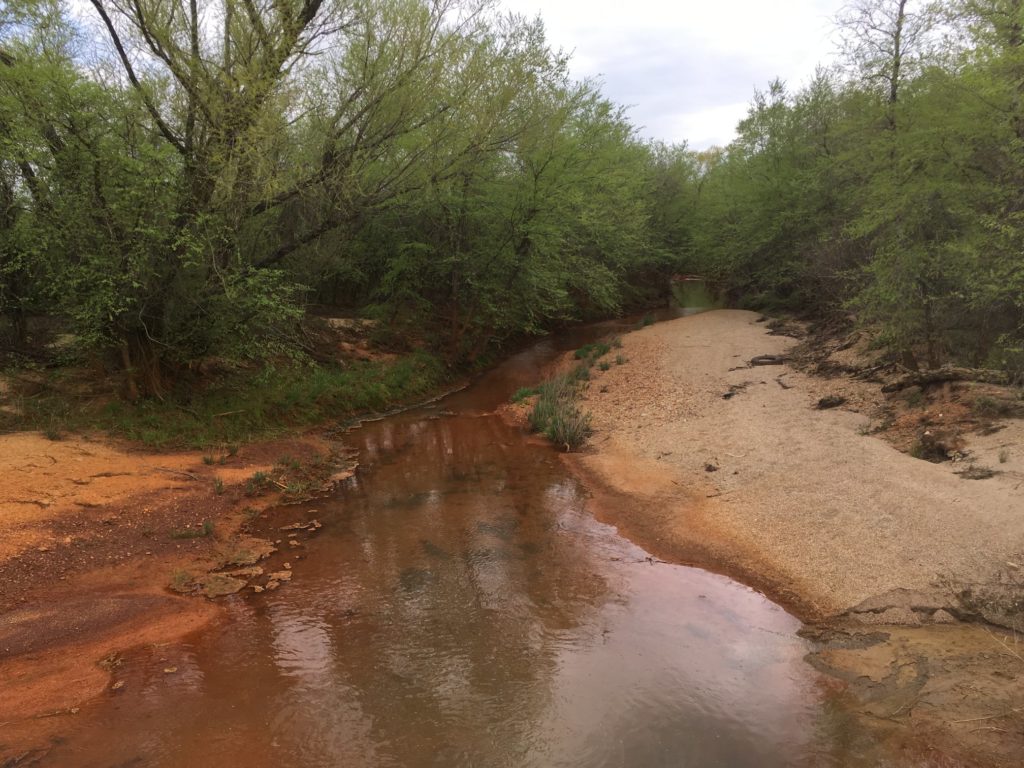
LEAD Agency Inc, Miami, OK and Ed Keahley

LEAD Agency Inc, Miami, OK and Ed Keahley

Diagram from Hao Holly Wang’s (MLA ’21) project for the option studio “TAR CREEK REMADE”
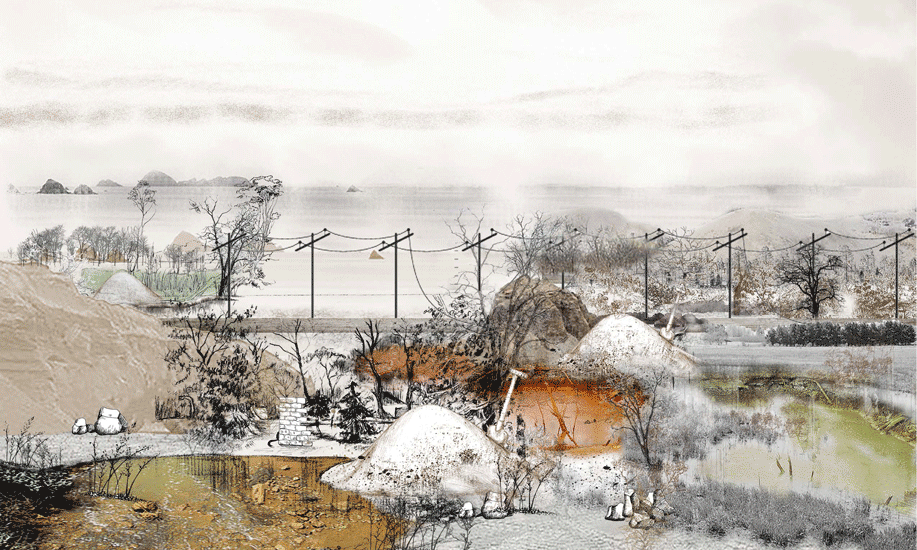
Animation from Jinying Zhang’s (MLA ’21) project for the option studio “TAR CREEK REMADE”
Loeb Fellowship announces incoming Class of 2022
Harvard Graduate School of Design’s Loeb Fellowship is pleased to announce its Class of 2022, a cohort of ten innovators who work across activism, urbanism, public art, film and media, technology, real estate development, and other fields that engage with the built environment and social outcomes. In addition to marking the program’s 51st class of Fellows, the Loeb Fellowship’s 2021-2022 cycle will inaugurate a collaborative fellowship between the Loeb Fellowship and the ArtLab at Harvard University. Each year, Harvard GSD’s Loeb Fellowship welcomes a cohort of exceptional mid-career practitioners through a highly competitive, global application process. The fellowship includes a one-year residency on the GSD’s campus, where fellows engage in research, audit courses, convene workshops, and attend and participate on panels and at conferences as a way of furthering knowledge-sharing and expanding their work through social engagement. The ten 2022 Loeb Fellows were selected from among 134 candidates, and join a powerful worldwide network of over 450 lifelong Loeb Fellows, alumni including Robin Chase, Alejandro Echeverri, Theaster Gates, Toni L. Griffin, Anna Heringer, Rick Lowe, Cathleen McGuigan, Damon Rich, Inga Saffron, and the late Phil Freelon. “The Class of 2022 exemplifies our commitment to some of the most urgent social issues of both the current moment and our collective history, among them racial justice, environmental and spatial equity, the societal impacts of technology, inclusive cultural preservation, and activism,” observes Loeb Fellowship Curator John Peterson. “In addition to their year of independent study, we look forward to amplifying the voices and issues that this cohort of Loeb Fellows brings to Harvard and the GSD community, through our events and public programming as well as active engagement with students and faculty.” The incoming cohort of Loeb Fellows are: Veyom Bahl, New York, NY; Managing Director, Robin Hood Foundation Karen Dawn Blondel, New York, NY; Founder, Public Housing Civic Association Andrea Bolnick, Cape Town, South Africa; Managing Director, Ikhayalami Stephanie Hankey, Berlin, Germany; Executive Director, Tactical Tech Will Hunter, London, United Kingdom; Founder, The London School of Architecture Mpho Matsipa, Johannesburg, South Africa; Founder and Chief Curator, African Mobilities and Chancellor’s Fellow (FALF), University of the Witwatersrand Monica Rhodes, Baltimore, MD; Director of Resource Management, National Park Foundation and Director of Partnerships, Center for the Preservation of Civil Rights Sites at the Weitzman School of Design, University of Pennsylvania Moddie Turay, Detroit, MI; Founder and CEO, City Growth Partners Michael Uwemedimo, Port Harcourt, Nigeria; Co-founder and Director, Collaborative Media Advocacy Platform and Senior Visiting Research Fellow, King’s College London Jordan Weber, Des Moines, IA; regenerative land sculptor and environmental activist; Artist-in-Residence, Walker Art Center and Pulitzer Arts Foundation In addition to being selected as one of this year’s fellows, Weber has been awarded the inaugural joint Loeb/ArtLab Fellowship, intended to enrich the fellowship experience with studio space in the ArtLab, research support and networking resources through the ArtLab community, and other engagement around proposed programs and projects over the course of the year. “As the ArtLab continues to expand and deepen its creative mission, we are excited to collaborate with the GSD on the Loeb/ArtLab Fellowship, and we are especially proud to select Jordan Weber for this inaugural cycle,” says ArtLab’s Director Bree Edwards. “The Loeb Fellowship’s commitment to interdisciplinary research and experimentation, and to improving social outcomes, intersects harmoniously with the ArtLab’s vision and mission, and we look forward to the important work and conversations that we hope this collaborative fellowship will inspire. Jordan brings a remarkable artistic vision and a commitment to exploring place, race, and power, and we are honored to collaborate on and share some of his projects in the coming months.” Loeb Fellows spend a year in residence in Cambridge engaging in research, collaboration, and dialogue at Harvard GSD, enhancing how their work advances positive social outcomes and equity. Among other activities during the course of their year-long residencies, Loeb Fellows immerse themselves in the academic environment, auditing courses across vast offerings at Harvard and MIT, challenging their ideas and processes, and expanding their professional networks. Fellows also engage with Harvard GSD students and faculty, participate as speakers and panelists at public events, and convene workshops and other activities that encourage knowledge sharing and creation. Throughout, Loeb Fellows consider how they might broaden or refocus their careers and the impact of their work, and deepen their work’s social engagement. The Loeb Fellowship traces its roots to the late 1960s, when John L. Loeb was directing a Harvard GSD campaign themed around “Crisis.” Loeb saw the American city in disarray and believed Harvard could help. He imagined bringing highly promising innovators of the built and natural environment to Harvard GSD for a year, challenging them to do more and do better, convinced they would return to their work with new ideas and energy. John and his wife Frances endowed the Loeb Fellowship as part of their gift to the “Crisis” campaign. They worked closely with William A. Doebele, the Frank Backus Williams Professor of Urban Planning and Design (now Emeritus), the program’s founding curator, who guided the program from the Class of 1971 through its first 27 years and shaped an experience that has had a powerful impact on generations of urban, rural, and environmental practitioners. Today, the Loeb Fellowship is led by Curator John Peterson, architect, activist, and founder of Public Architecture, a national nonprofit organization, and himself a program alumnus.2021 Graduating Student Award Recipients
Each year at commencement, the Harvard Graduate School of Design confers awards on graduating students who demonstrate exceptional scholarly achievement, leadership, and service. Congratulations to the student award recipients, and to all of the 2021 graduates for your tremendous accomplishments.School-wide Awards
Gerald M. McCue Medal: Robert Morris Levine (MDes ADPD ’21)
The Gerald M. McCue Medal is awarded each year to the student graduating from one of the school’s post professional degree programs who has achieved the highest overall academic record.Digital Design Prize: Matthew Pugh (MArch II ’21) for “Animated Spaces, Creature-Like Objects: Animistic Interactions With Smart Buildings + IOT Objects”
Digital Design Prize: Ana Gabriela Loayza Nolasco (MArch II ’21) for “Center – Periphery: Encoding New Processes in Shenzhen’s Boundaries”
The Digital Design Prize is presented by the Graduate School of Design to the student who has demonstrated the most imaginative and creative use of computer graphics in relation to the design professions.Plimpton Poorvu Prize: Ian Grohsgal (MArch I ’21), Sarah Fayad (MLAUD ’20), and Dixi Wu (MDes REBE/ MArch I ’22) for “Building a Scalable Business in Data Centers”
The Plimpton-Poorvu Design Prize recognizes the top team or individual for a viable real estate project completed as part of the GSD curriculum that best demonstrates feasibility in design, construction, economics, and in fulfillment of market and user needs.Clifford Wong Prize in Housing Design: Isabel Dunham Strauss (MArch I ’21) for “Up from the Past: Housing as Reparations on Chicago’s South Side”
Clifford Wong Prize in Housing Design: Shaina Yang (MArch I ’21) for “Cripping Architecture”
The Clifford Wong Prize in Housing Design aims to help re-establish the essential role of architects in society to provide not only the fundamental needs of human shelter but to meet the challenge of designing creative solutions for improving living environments. The Prize is awarded for the multi-family housing design that incorporates the most interesting ideas and/or innovations that may lead to socially-oriented, improved living conditions.Peter Rice Prize: Erin Linsey Hunt (MDes Tech ’21) and Yaxuan Liu (MArch I ’21) for “NuBlock“
The Peter Rice prize honors students of exceptional promise in the school’s architecture and advanced degree programs who have proven their competence and innovation in advancing architecture and structural engineering.Sinclair Kennedy Traveling Fellowship: Brittany Alexis Giunchigliani (MLA I ’21) for study in Galicia, Spain
Sinclair Kennedy Traveling Fellowship: Sam E. Valentine (MLA II ’21) for study in Brazil and Africa
The Sinclair Kennedy Traveling Fellowships support a full academic year of research at destinations outside of the United States.Fulbright Grant: Sam E. Valentine (MLA II ’21) for study in Brazil and Africa
Fulbright Grant: Ciara Stein (MLA I/MUP ’21) for study in Kosovo
The Fulbright US Student Program is an international exchange program in the fields of education, culture, and science, offering advanced research, study, and teaching opportunities in over 140 countries.Alumni Award: Deanna Van Buren (Loeb Fellow ’13), Jack Dangermond (MLA ’69), and Everett Fly (MLA ’77)
The inaugural Alumni Award honors outstanding leadership by GSD alumni, underscoring that our students don’t stop being amazing after they graduate.Architecture Awards
American Institute of Architects Medal: Hannah Connolly Hoyt (MArch ’21)
The American Institute of Architects Medal is awarded to a professional degree student in the Master in Architecture graduating class who has achieved the highest level of excellence in overall scholarship throughout the course of their studies.Alpha Rho Chi Medal: Kofi Akakpo (MArch I ’21)
The Alpha Rho Chi Medal is awarded to the graduating student who has achieved the best general record of leadership and service to the department and who gives promise of professional merit through their character.James Templeton Kelley Prize MArch I: Shaina Yang (MArch I ’21) for “Cripping Architecture”
James Templeton Kelley Prize MArch I: Calvin Ray Boyd, II (MArch I ’21) for “Pair of Dice, Para-dice, Paradise; A Counter-Memorial to Police Brutality”
James Templeton Kelley Prize MArch II: Yuming Feng (MArch II ’21) for “American Brick and the Difficult Whole”
The James Templeton Kelley Prize recognizes the best final design project submitted by a graduating student in the architecture degree programs.Julia Amory Appleton Traveling Fellowship in Architecture: Hannah Connolly Hoyt (MArch ’20)
The Julia Amory Appleton Traveling Fellowship is given to a student in the Department of Architecture on the basis of academic achievement as well as the worthiness of the project to be undertaken.Kevin V. Kieran Prize: Arta Perezic (MArch II ’21)
The Kevin V. Kieran Prize recognizes the highest level of academic achievement among students graduating from the post-professional Master in Architecture program.Dept. of Architecture Faculty Design Award MArch I: Anna Kaertner (MArch I ’21)
Dept. of Architecture Faculty Design Award MArch I: Sarah Sum In Cheung (March I ’21)
Dept. of Architecture Faculty Design Award MArch II: Zhonghan Huang (MArch II ’21)
The Department of Architecture Faculty Design Award was established by the faculty of the Department of Architecture with the aim of recognizing significant achievement within a body of design work completed by a student at the GSD. This award is given to graduating students from each of the department’s two programs.Landscape Architecture Awards
Thesis Prize in Landscape Architecture: Gracie Villa (MLA I ’21) for “City|Forest: Reordering Plant-Human Relationships Towards Healthy Cities”
Thesis Prize in Landscape Architecture: Joanne Li (MLA I ’21) for “Ovis Versatilis: Icelandic Sheep Farm as Land Art Museum and Evolution Lab”
The Landscape Architecture Thesis Prize is given to the graduating student who has prepared the best independent thesis during the past academic year.American Society of Landscape Architects Certificate of Merit: Shira Grosman (MLA/ MDes ULE ’21)
American Society of Landscape Architects Certificate of Merit: Maxwell Smith-Holmes (MLA I ’21)
American Society of Landscape Architects Certificate of Honor: Kira Bre Clingen (MLA I/MDes RR ’21)
American Society of Landscape Architects Certificate of Honor: Koby Moreno (MLA ’21)
Each year the faculty in the Department of Landscape Architecture nominates students for the American Society of Landscape Architecture Awards2020 Landscape Architecture Foundation Olmsted Scholar: Jaline Esther-Mae McPherson (MLA I ’21)
Each year the faculty in the Department of Landscape Architecture nominates a student for the Landscape Architecture Foundation Olmsted Scholars Program. The program recognizes and supports students with exceptional leadership potential.Norman T. Newton Prize: Brittany Giunchigliani (MLA I ’21)
The Norman T. Newton Prize is given to a graduating landscape architecture student whose work best exemplifies achievement in design expression as realized in any medium.Pete Walker & Partners Fellowship for Landscape Architecture: Gena Morgis (MLA II ’21)
Pete Walker & Partners Fellowship for Landscape Architecture: Dominic Baitoo Riolo (MLA I ’21)
The Peter Walker and Partners Fellowship for Landscape Architecture is awarded to support travel and study for a graduating GSD student to advance their understanding of the body of scholarship and practices related to landscape design.Jacob Weidenmann Prize: Alysoun Irwin Wright (MLA I AP/ MUP ’21)
The Jacob Weidenmann Prize is awarded to the student of the most distinguished design achievement graduating from the Department of Landscape Architecture.The CELA Fountain Scholar Program: Jaline Esther-Mae McPherson (MLA I ’21)
The CELA Fountain Scholar Program is an endowed annual award in recognition and support of Black, Indigenous, and persons (students) of color in landscape architecture with exceptional design skills and who use their skills and ideas to influence, communicate, lead and advance design solutions for contemporary issues in a manner aligned with the original goals of Dr. Charles Fountain.Charles Eliot Traveling Fellowship in Landscape Architecture: Ciara Stein (MLA I/MUP ’21)
The Charles Eliot Traveling Fellowship is awarded annually as the highest honor by the Department of Landscape Architecture to one of its graduates.Urban Planning and Design
Academic Excellence in Urban Planning: Anna Carlsson (MUP ’21)
Academic Excellence in Urban Design: Alia Bader (MAUD ’21)
The Award for Academic Excellence in Urban Planning and Urban Design honors graduating students from each of the programs who have achieved the highest academic record.Award for Outstanding Leadership in Urban Planning: Kyle Miller (MUP ’21)
Award for Outstanding Leadership in Urban Planning: Alia Bader (MAUD ’21)
The Award for Outstanding Leadership in Urban Planning and Urban Design honors graduating students from each of the programs who have demonstrated outstanding leadership during their time at the Graduate School of Design.Urban Planning Thesis Prize: Mary Louise Chatters Taylor (MUP ’21) for “Urban Planning and Mental Wellness in Black Communities”
Urban Design Thesis Prize: Adam Mekies (MLAUD ’21) for “Aggregate, Aggregation + Geotechnical Urbanism”
The Department of Urban Planning and Design Thesis Prize is given to the graduating students in each of the programs who have prepared the best independent theses during the past academic year.The Award for Excellence in Project-Based Urban Planning: Anne Lin (MUP/MPH ’21)
The Award for Excellence in Project-Based Urban Planning is given to students who have demonstrated exceptional ability in urban planning projects including research and design studios throughout their course of study.The Award for Excellence in Urban Design: Christopher D’Amico (MAUD ’21)
The Award for Excellence in Urban Design is given to students who have demonstrated exceptional design ability throughout their course of study in the Urban Design program.American Institute of Certified Planners Outstanding Student Award: Steven Yuan Gu (MUP ’21)
The American Institute of Certified Planners Outstanding Student Award recognizes outstanding attainment in the study of planning by students graduating from accredited planning programs. The recipient of the award is chosen by a jury of planning faculty at each school.Ferdinand Colloredo-Mansfeld Prize for Superior Achievement in Real Estate Studies: Jiae Hasina Azad (MUP ’21)
Ferdinand Colloredo-Mansfeld Prize for Superior Achievement in Real Estate Studies: Julian Martin Huertas (MUP ’21)
Ferdinand Colloredo-Mansfeld Prize for Superior Achievement in Real Estate Studies: George Zhang (MArch ’21)
The Ferdinand Colloredo-Mansfeld Prize for Superior Achievement in Real Estate Studies is awarded annually to a graduating student from any program who has exhibited superior academic accomplishment and leadership in real estate studies.Druker Traveling Fellowship: Sam Naylor (MAUD ’21)
Established in 1986, The Druker Traveling Fellowship is open to all students at the GSD who demonstrate excellence in the design of urban environments. It offers students the opportunity to travel in the United States or abroad to pursue study that advances understanding of urban design.Design Studies
Dimitris Pikionis Award: Emma Lewis (MDes CC ’21)
The Dimitris Pikionis Award recognizes a student for outstanding academic performance in the Master in Design Studies degree program.The Daniel L. Schodek Award for Technology and Sustainability: Sunghwan Lim (MDes EE ’21)
The Daniel L. Schodek Award for Technology and Sustainability: Joon Haeng Lee (MDes Tech ’21)
The Daniel L. Schodek Award for Technology and Sustainability honors the memory and legacy of Professor Daniel Schodek and the standards of excellence he established during his 40 years of teaching and mentoring at the GSD. The award is given annually in recognition of the best Master in Design Studies thesis in the area of technology and sustainable design.The Design Studies Thesis Prize: Juan David Grisales (MDes ULE ’21) for “From Humboldt to Caldas: Environmental Liberations through Tropical Altitudes”
The Design Studies Thesis Prize: Proey Liao (MDes HPDM/MArch II ’21) for “An Attempt to Approach a Void: Georges Perec, Cause commune, and the Infraordinary”
The Design Studies Thesis Prize is given annually for the best thesis by a Master in Design Studies student.Outstanding Leadership in Real Estate Award: Jan Joseph Voitehovich (MDes REBE ’21)
The Outstanding Leadership in Real Estate Award offers recognition to students who exemplify academic excellence in real estate study, lead through self initiative, with generous efforts in promoting the mission of the MDes real estate program.Design Engineering
Overall Academic Performance: Sarah Christine Kovar (MDE ’21)
The Overall Academic Performance award recognizes a graduating MDE student for outstanding academic performance in the Master in Design Engineering degree program.Leadership and Community Prize: Cate Tompkins (MDE ’21)
The Leadership and Community award recognizes one or more graduating students who have displayed outstanding leadership and community building within the Design Engineering cohort and who have represented MDE values to the larger world.Outstanding Independent Design Engineering Project: Sarah Christine Kovar (MDE ’21) and Ed Bayes (MDE ’22)
The Outstanding Design Engineering Project award honors one or more graduating MDE students who have presented the Design Engineering Project that contributes, in the most compelling way, to understanding and addressing a complex societal problem.2021 Class Day Speaker Jia Tolentino: An Interview
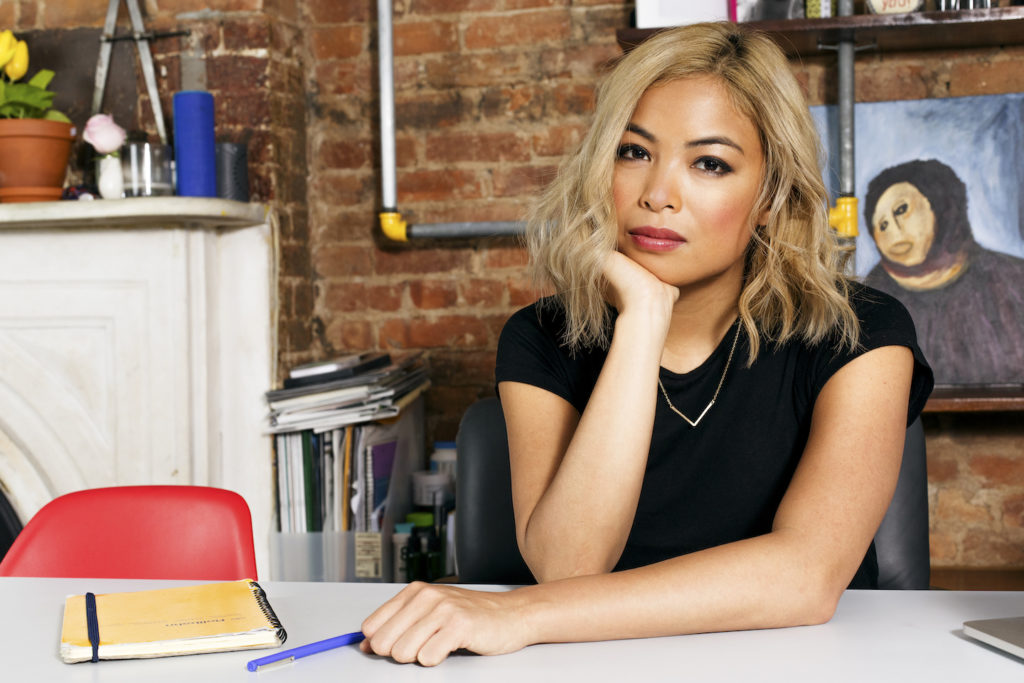
Jia Tolentino will present the GSD’s 2021 Class Day Address. Photo by Elena Mudd.
Let’s start with something I think a lot of people will want to learn more about: is that an original Ecce Homo in the backdrop of your headshot?
It absolutely is—thank you so much for noticing. I painted it several years ago while consuming three glasses of merlot on “free paint night” at a place in my neighborhood in Brooklyn called Wine and Design, which really sadly was a casualty of the pandemic. I’m not joking at all when I say that Ecce Homo speaks to me on a profound spiritual level—it is a reminder of the absurdity and transience of all human effort—and it was the ideal choice of subject for free paint night, because if I messed it up I would only honor its powerful energy even more.Trick Mirror, like much of your writing, suggests clarity and conclusion amid chaos and conflict, though you write in the introduction that you are not always the “calm person who shows up on paper.” For you, what goes on in the space/s between thinking and writing?
For me, there is almost no space between thinking and writing, because I essentially can’t engage with my own thoughts outside a written form. My head is either empty or full of opaque gaseous substances. I can hardly even perceive properly without writing; I keep a notebook that’s mostly about the sky and the trees and the weather, because this is the best way to get myself to actually see the natural world. Outside writing, I have instincts, I feel conflict and trouble and dread and gravitation, but otherwise I have absolutely nothing—the only sense-making I am capable of always occurs in words.You’ve observed that the pandemic has, among other things, altered your sense of the “possible rate of change.” That’s impressive, because I can barely remember what day it is. What sorts of events or phenomena have you seen accelerate, and what has slowed down?
In March of 2020, we shifted overnight to a way of life we’d thought of as unthinkable a week prior, and remained in that way of life for more than a year. Abolition and Universal Basic Income entered the Overton window, as did a near-unanimous acknowledgment that at least one specific form of healthcare, in COVID treatment, should be public and free. We stopped traveling, stopped using carbon in ways that many of us had thought of as completely essential. Not that I ever want to spend another year in one chair staring at my computer, but I have been galvanized by the reminder that we are capable of so much more than is typically expected of us, and that we are capable of reconstructing the way we live on other terms.In an article in Elle—back in 2019—you were described as “extremely online.” How far did “extremely” expand last year?
It actually contracted—even as, like most everyone, I spent much more time looking at screens than I would have liked. I had been limiting my time on social media to 45 minutes a day for a while before the pandemic, but I had continued to excuse my participation in the world of memes and Twitter discourse with the fact that real life and real people were self-evidently and considerably more vivid and interesting to me, and the fact that I wrote about the internet for work. But in the pandemic, there was no real life to outweigh the internet; it was just the internet, and I was also shifting toward other kinds of work, like screenwriting. I eventually got off Twitter in summer 2020, shortly before having a baby, because I didn’t want to be up all night with her doing the numbing pleasureless scroll.You’re intellectually omnivorous, and it’s enviable. The rest of us could probably use a revamp of our media hygiene, or some media hygiene to start with. What might you place in a starter pack for someone who wants to begin, or end, their day with a useful and enlightening periscope on social and cultural news of the day/moment?
I think that I’m probably underinformed right now, because I haven’t really looked for a workable substitute for Twitter in terms of finding and bookmarking new things to read; but reading books in the morning and evening has always been my main tactic for attentional hygiene. The most interesting way to think about the present almost never comes from the present, right? I try to indulge my passing curiosities, and read books about feudalism and cloud formation, and trust that nothing you go out of your way to learn is a waste.You’ve been credited with revitalizing the essay over the last decade, and your writing is a pleasure, a master class, a therapy session, and a stand-up routine all in one. You’ve also deftly maneuvered what, in the early 2010s, felt like bit of a wall: the print-digital divide. You’ve taken on long-form writing and published a book, while also going viral somewhat regularly. What is it about the essay and long-form that suits your intellectual contours and desires? And what future do you see, or imagine, for long-form as our slightly bruised modern society continues tiptoeing through the 2020s?
You are very generous, and I can’t believe I wrote so much throughout the last decade. But I liked every kind of writing, from silly short blog posts to way-too-long essays in my book. It was a gift to be working at a time just before algorithmic flattening had completely taken over the internet, a time in which there was enough variety and flexibility in the media ecosystem to shift between flippancy and formality and giddiness and solemnity. I like writing long, because I like the depth and the challenge, and I think that readers, myself included, remain very eager for a winding, absorbing, consuming journey. But all types of worthwhile writing are disappearing right now because of the economics of publishing. Social media companies have made it impossible for publications to support themselves on advertising, venture capital is stomping local newspapers into the ground, and there are very few alternative or truly independent outlets for young writers to play around and develop a voice.Your boyfriend Andrew Daley is an architect. You must, therefore, have some advice for our graduates. And maybe it’s advice on living with an architect, not being one.
My boyfriend and I historically do not speak about work with each other—he doesn’t read books and I don’t know what cement is. But there was one night that he brought home a 70-page drawing set and when I asked him to explain “what it was” I felt like I was a monkey being given a tour of a space station. I think (and hope, for the purposes of Class Day 2021) that there are parallels between writing and design in terms of mapping structure and identifying possibility and envisioning what does not exist yet, but I’ve always been kind of amazed at the way design work lives in the realm of the actual, when my work is just a sort of trick of direction in the mind.Meet the GSD Class of 2021 Commencement Marshals
Graduating students from each program at the Harvard Graduate School of Design come together to nominate and elect a classmate to serve as their commencement marshal. Being selected as a commencement marshal is one of Harvard’s most beloved traditions and is a high honor for a graduating student. After Commencement, the marshals become the alumni liaisons for their class cohorts. Meet the graduates who will represent their program at the GSD’s virtual commencement ceremony:Architecture: Brayton Gregory
 A native of Greenville, SC, Brayton studied architecture at Clemson University before enrolling at Harvard to join the Master in Architecture I program. When not working on studio projects or other coursework, Brayton could be found on the pitch with teammates from GSD Soccer. In his free time, he enjoys going for bike rides, cooking, and traveling.
A native of Greenville, SC, Brayton studied architecture at Clemson University before enrolling at Harvard to join the Master in Architecture I program. When not working on studio projects or other coursework, Brayton could be found on the pitch with teammates from GSD Soccer. In his free time, he enjoys going for bike rides, cooking, and traveling.
Landscape Architecture: Ciara Stein
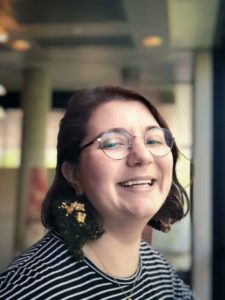 Hailing from London, England, Ciara received her undergraduate degree from the University of Pennsylvania, focusing on urban studies. Upon graduating from Penn, she was awarded the Robert A. Fox Leadership Fellowship and worked for two nonprofits in New Orleans that focused on affordable housing and community development (Providence Community Housing and HousingNOLA). In addition to pursuing a dual degree in Landscape Architecture and Urban Planning at the GSD, Ciara was the lead organizer for Womxn in Design’s International Womxn’s Week 2021, took part in the 2019-2020 Climate Leaders Program, and was a member of Harvard Urban Planning Organization and Organizers for Radical Climate Action at the GSD. In the summer of 2020, she served as a Community Service Fellow, working with the Pennsylvania Horticultural Society. Ciara has exhibited at the Kirkland Gallery and her work was part of the Design Yard Sale.
Hailing from London, England, Ciara received her undergraduate degree from the University of Pennsylvania, focusing on urban studies. Upon graduating from Penn, she was awarded the Robert A. Fox Leadership Fellowship and worked for two nonprofits in New Orleans that focused on affordable housing and community development (Providence Community Housing and HousingNOLA). In addition to pursuing a dual degree in Landscape Architecture and Urban Planning at the GSD, Ciara was the lead organizer for Womxn in Design’s International Womxn’s Week 2021, took part in the 2019-2020 Climate Leaders Program, and was a member of Harvard Urban Planning Organization and Organizers for Radical Climate Action at the GSD. In the summer of 2020, she served as a Community Service Fellow, working with the Pennsylvania Horticultural Society. Ciara has exhibited at the Kirkland Gallery and her work was part of the Design Yard Sale.
Urban Design: Adam Mekies
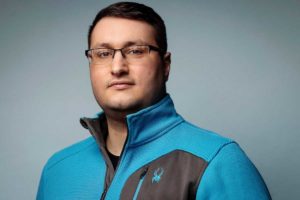 Adam is a licensed landscape architect whose work focuses on the role of computation and construction in environmental and ecological design. He is a graduate of Iowa State University and co-author, with Bradley Cantrell, of Codify: Parametric and Computational Design in Landscape Architecture. His recent work for the New York office of Sherwood Design Engineers focuses on ecological and technological infrastructure for public and private real estate. He is receiving a Master of Landscape Architecture in Urban Design from the GSD.
Adam is a licensed landscape architect whose work focuses on the role of computation and construction in environmental and ecological design. He is a graduate of Iowa State University and co-author, with Bradley Cantrell, of Codify: Parametric and Computational Design in Landscape Architecture. His recent work for the New York office of Sherwood Design Engineers focuses on ecological and technological infrastructure for public and private real estate. He is receiving a Master of Landscape Architecture in Urban Design from the GSD.
Urban Planning: Sarah Smyth
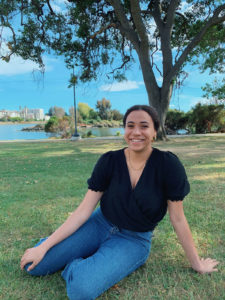 Sarah Smyth grew up in Alameda, CA, and studied political science at UCLA. Prior to graduate school, she spent a year in public affairs consulting as a Coro Fellow. Her work spanned public, private, and nonprofit clients across the topics areas of education, technology, diversity and inclusion, and environmental sustainability. Inspired by her experience growing up in the Bay Area, Sarah is interested in exploring equitable economic growth for communities of color and strategies for addressing the consequences of gentrification. At Harvard, she explored these topics through her work as co-president of the Harvard Urban Planning Organization, housing fellow for the Access to Justice Lab at Harvard Law School, and research assistant for the Just City Lab at the GSD. In her free time, she enjoys yoga, dancing, live music, and spending time in the outdoors.
Sarah Smyth grew up in Alameda, CA, and studied political science at UCLA. Prior to graduate school, she spent a year in public affairs consulting as a Coro Fellow. Her work spanned public, private, and nonprofit clients across the topics areas of education, technology, diversity and inclusion, and environmental sustainability. Inspired by her experience growing up in the Bay Area, Sarah is interested in exploring equitable economic growth for communities of color and strategies for addressing the consequences of gentrification. At Harvard, she explored these topics through her work as co-president of the Harvard Urban Planning Organization, housing fellow for the Access to Justice Lab at Harvard Law School, and research assistant for the Just City Lab at the GSD. In her free time, she enjoys yoga, dancing, live music, and spending time in the outdoors.
Design Studies: Kevin Liu
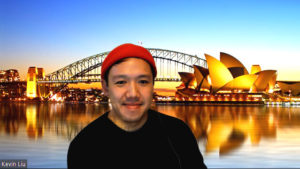 Kevin is a native of Sydney, Australia. After receiving a Bachelor of Design in Architecture and a Master of Architecture at the University of Sydney, he worked as a registered project architect at an award-winning residential architecture practice on the central coast. Before that, Kevin was a partner in his own practice, TYP-TOP Architecture Office, which he set up with a friend from school after being shortlisted as one of five finalists out of 144 international entrants in a competition for a new aquatic center in Sydney. Awarded the Frank Knox Memorial Fellowship, Kevin enrolled at Harvard to pursue a Master in Design Studies with a focus on History and Philosophy of Design and Media. During his time at the GSD, Kevin served on Student Forum and was co-chair of the Design Research Forum, the student organization of the MDes program. Outside of his coursework, he is an avid printmaker, working mostly with copper etching and mezzotints.
Kevin is a native of Sydney, Australia. After receiving a Bachelor of Design in Architecture and a Master of Architecture at the University of Sydney, he worked as a registered project architect at an award-winning residential architecture practice on the central coast. Before that, Kevin was a partner in his own practice, TYP-TOP Architecture Office, which he set up with a friend from school after being shortlisted as one of five finalists out of 144 international entrants in a competition for a new aquatic center in Sydney. Awarded the Frank Knox Memorial Fellowship, Kevin enrolled at Harvard to pursue a Master in Design Studies with a focus on History and Philosophy of Design and Media. During his time at the GSD, Kevin served on Student Forum and was co-chair of the Design Research Forum, the student organization of the MDes program. Outside of his coursework, he is an avid printmaker, working mostly with copper etching and mezzotints.
Design Engineering: Arushi Saxena
 After growing up in Sacramento, CA, Arushi attended UC Berkeley’s Haas School of Business, graduating with a BS in Business Administration. She then worked as an advisor to senior leadership in the technology sector on business strategy and financial insights at companies including LinkedIn and Formation.ai. Her overall professional experience spans strategy & operations, organizational behavior, and finance. At Harvard and the GSD, she focused her research on misinformation, privacy, data ethics, and positioning the technology industry to better manage unintended consequences on society, cities, and the environment. She was actively involved with Harvard Bloomberg City Leadership Initiative, Berkman Klein Center for Internet & Society, and Harvard’s Belfer Center, and served as a teaching fellow for MDE’s Core Interdisciplinary Studio. In her free time, she enjoys cooking, exploring the outdoors, and volunteering.
After growing up in Sacramento, CA, Arushi attended UC Berkeley’s Haas School of Business, graduating with a BS in Business Administration. She then worked as an advisor to senior leadership in the technology sector on business strategy and financial insights at companies including LinkedIn and Formation.ai. Her overall professional experience spans strategy & operations, organizational behavior, and finance. At Harvard and the GSD, she focused her research on misinformation, privacy, data ethics, and positioning the technology industry to better manage unintended consequences on society, cities, and the environment. She was actively involved with Harvard Bloomberg City Leadership Initiative, Berkman Klein Center for Internet & Society, and Harvard’s Belfer Center, and served as a teaching fellow for MDE’s Core Interdisciplinary Studio. In her free time, she enjoys cooking, exploring the outdoors, and volunteering.
Doctor of Design: Julia Smachylo
 Originally from Toronto, Canada, Julia studied at Queen’s University, University College London, and the University of Toronto before enrolling at Harvard. She then worked as an urban planner, designer, and adjunct professor before deciding to pursue her Doctor of Design. While at the GSD, Julia was involved in the Urban Theory Lab and New Geographies, and served as a DDes representative. In her free time, she enjoys running, reading, yoga, and gardening.
Originally from Toronto, Canada, Julia studied at Queen’s University, University College London, and the University of Toronto before enrolling at Harvard. She then worked as an urban planner, designer, and adjunct professor before deciding to pursue her Doctor of Design. While at the GSD, Julia was involved in the Urban Theory Lab and New Geographies, and served as a DDes representative. In her free time, she enjoys running, reading, yoga, and gardening.





